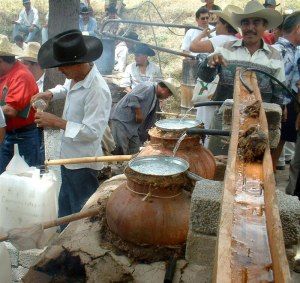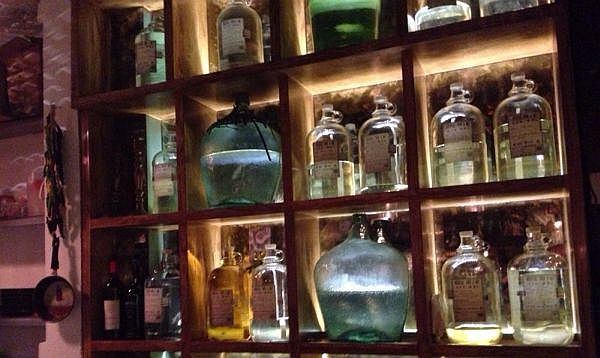Mexico City - From the first "kiss" of mezcal, as a sip of that beverage is called here, along a trail of tasty discoveries that even has its "spiritual" moments, tourists in Mexico City can now follow a new route through the tradition, culture and heritage of this liquor of pre-Columbian origin.
This is the Mezcal Route, a chance to explore the history of mezcal through tastings accompanied by traditional dishes of the Mexican states that distill it.
More than 50 plant species of the Agave genus are used for making mezcal, but only a few are officially recognized by the Mexican Regulatory Council of Mezcal Quality, or Comercam, which is in charge of certifying production.
In recent years, production of this Mexican drink first distilled in pre-Columbian days has taken off in states like Oaxaca, Michoacan, Durango, Zacatecas, San Luis Potosi, Guerrero and Guanajuato.
 |
The first stop on the route is La Lavanderia, an establishment with magical colors in the capital's Condesa suburb, where visitors on the route can taste a 90-proof mezcal with a smoked flavor that is savored with a salted apple or orange.
To taste this drink, considered "spiritual," one must give it a "kiss" - have a first drink - which opens the throat to its strong flavor. The second drink is friendlier and the mezcal flavors are readily discerned and appreciated.
Paco Hernandez, who stages the mezcal tasting at La Lavanderia, told EFE that his goal is to teach clients the origins of agave and help them appreciate the properties of the liquor.
Some agaves are found "only once in a lifetime," so "the drink made from them cannot be mixed with other beverages or ingredients," Hernandez said.
The second stop is Corazon Oaxaqueño, a restaurant that brings all the charm of the southern state of Oaxaca to the capital.
It offers a dazzling array of mezcals – tepextate, tobala, arroqueño, tobaziche and more - along with other gastronomic dishes typical of the region like mole, enchiladas and tlayudas. At this stop one can enjoy the 80-proof Oaxacan mezcal Amatlan to the beat of music typical of that region. Its smoky-sweet flavor and alcohol content give it a rich aroma and delight the palate.
The tour, which lasts some four hours, comes to an end at El Candelero restaurant, whose style takes visitors back to the romantic splendors of 18th century Mexican baroque.
Available for tasting at El Candelero is a 92-proof mezcal called Santa Pedrera that has matured for eight years in the Oaxacan community of San Agustín Amatengo.
The Santa Pedrera at the end of the route is savored with chocolate to smooth its strong flavor. Its distillers call it "no more sorrow."
Original article


